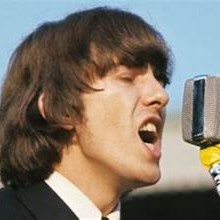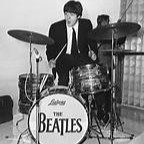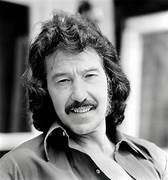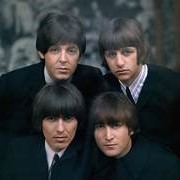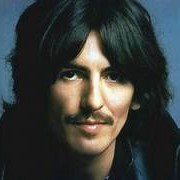George Harrison: A Journey Through The Beatles Era By Ruben G. Vasquez Beatles Historian The4Beatles.com George Harrison While all four members played a pivotal role in shaping The Beatles success, George Harrison, the lead guitarist, brought his own unique flavor to their sound. We will explore the life of George Harrison during his time with the Beatles, discovering his contributions to the band’s music, his personal growth, and the challenges he faced along the way. As an Amazon Affiliate, a commission may be earned from qualifying purchases. Previous Next The Early Days In The Beatles Born on February 25, 1943, in Liverpool, England, George Harrison developed a passion for music at a young age. In 1958, at the age of 15, he joined John Lennon and Paul McCartney in the Quarrymen, what would later become the Beatles. Initially, George was regarded as the “Quiet Beatle,” overshadowed by the more dominant personalities of Lennon and McCartney. However, his determination and talent would soon shine through. Previous Next Musical And Songwriting Contributions George Harrison’s unique guitar-playing style and Eastern influences helped redefine the Beatles’ sound. He introduced the sitar, an Indian instrument, in the iconic song “Norwegian Wood,” which sparked a fascination with Indian music among his bandmates and fans. This led to a significant influence of Indian classical music on several Beatles tracks. As the band progressed, George’s songwriting skills flourished. He wrote classics such as “While My Guitar Gently Weeps,” “Something,” and “Here Comes The Sun” These compositions showcased his lyrical depth, emotional maturity, and ability to craft timeless melodies. Previous Next Spiritual Journey During his time with the Beatles, George Harrison embarked on a spiritual journey, exploring Eastern philosophies and meditation. His interest in Hinduism, particularly the teachings of Maharishi Mahesh Yogi, influenced his personal growth and musical direction. This spiritual exploration led George to embrace a more introspective and philosophical approach to life, which became evident in his songwriting. Through regular meditation practice, Harrison found a sense of inner peace and clarity that helped him navigate the challenges of his personal life and the fame that came with being a Beatle. Harrison’s deep connection with Maharishi’s teachings extended beyond the studio. He became an advocate for meditation, openly expressing his belief in its transformative power. His journey with Maharishi instilled a sense of purpose and provided a framework for understanding his place in the world, leading to a lifelong commitment to spiritual exploration. Previous Next Harrison Became Influenced Maharishi’s influence on Harrison extended beyond their time together. In the years following his experience in India, Harrison continued to study and practice Transcendental Meditation. He became an ambassador for Maharishi’s teachings, promoting meditation as a means of personal and global transformation. Furthermore, George Harrison’s connection with Maharishi Mahesh Yogi inspired him to use his influence and resources for philanthropic endeavors. He organized the Concert for Bangladesh, a groundbreaking charity event that raised funds for relief efforts in the war-torn country. Harrison’s commitment to humanitarian causes stemmed from his spiritual journey with Maharishi and the desire to make a positive impact on the world. Harrison Quit The Beatles (For A Short Time) Despite the band’s immense success, tensions arose within the Beatles. George Harrison’s creative aspirations clashed with the dominant presence of Lennon and McCartney. Frustrated by limited opportunities to showcase his talents, George felt marginalized. This discontent culminated during the recording of the “Let It Be” album, where conflicts among band members reached a boiling point. Post Beatles: All Things Must Pass Following the Beatles’ breakup in 1970, George Harrison embarked on a successful solo career. His first solo album, “All Things Must Pass,” proved to be a resounding success, earning critical acclaim and commercial triumph. Throughout his solo years, George continued to explore spiritual themes and collaborated with renowned musicians, including Bob Dylan and Eric Clapton. Author’s Summation The story of George Harrison’s incredible journey through The Beatles era is one that reverberates with musical brilliance, personal growth, and a legacy that continues to resonate today. As the lead guitarist of The Beatles, Harrison’s impact on the band’s sound and his subsequent solo career stand as a testament to his musical talent and artistic evolution. Harrison’s initiation into The Beatles as the lead guitarist was a turning point in his life. From the moment he stepped into Abbey Road Studios, working under the guidance of the legendary producer George Martin, Harrison’s musical journey began to unfold. His guitar solos, intricate melodies, and innovative chord progressions quickly became defining elements of the band’s sound. While the spotlight often shone on John Lennon and Paul McCartney, Harrison’s unique voice emerged through his songwriting contributions. His compositions, like “Here Comes the Sun” and “Something,” adorned the Abbey Road album, showcasing his ability to create timeless melodies that touched the hearts of Beatle fans everywhere. Harrison’s role as a guitarist was accompanied by his growth as a solo artist. His journey began with his solo debut album, “All Things Must Pass,” which resonated deeply with fans and critics alike. The title track, a reflection of Harrison’s spiritual beliefs, became an anthem for a generation searching for meaning and purpose. However, Harrison’s journey wasn’t always smooth sailing within the Beatles fraternity. His relationship with John Lennon and Paul McCartney, while at times challenging, also showcased moments of camaraderie and collaboration. The Beatles Anthology project brought forth previously unreleased songs, offering fans a glimpse into the creative dynamic between Harrison and his fellow Beatles. Harrison’s spiritual exploration became an integral part of his identity. Influenced by Indian philosophy and Eastern spirituality, he sought meaning beyond the world of music. Songs like “My Sweet Lord” and “Give Me Love (Give Me Peace on Earth)” were testaments to his inner quest, resonating with audiences searching for deeper connections. The end of The Beatles marked a significant transition for Harrison. As he ventured into his solo career, he found his own voice, shedding the shadow of the band that had defined a generation. His contributions to … Read more
